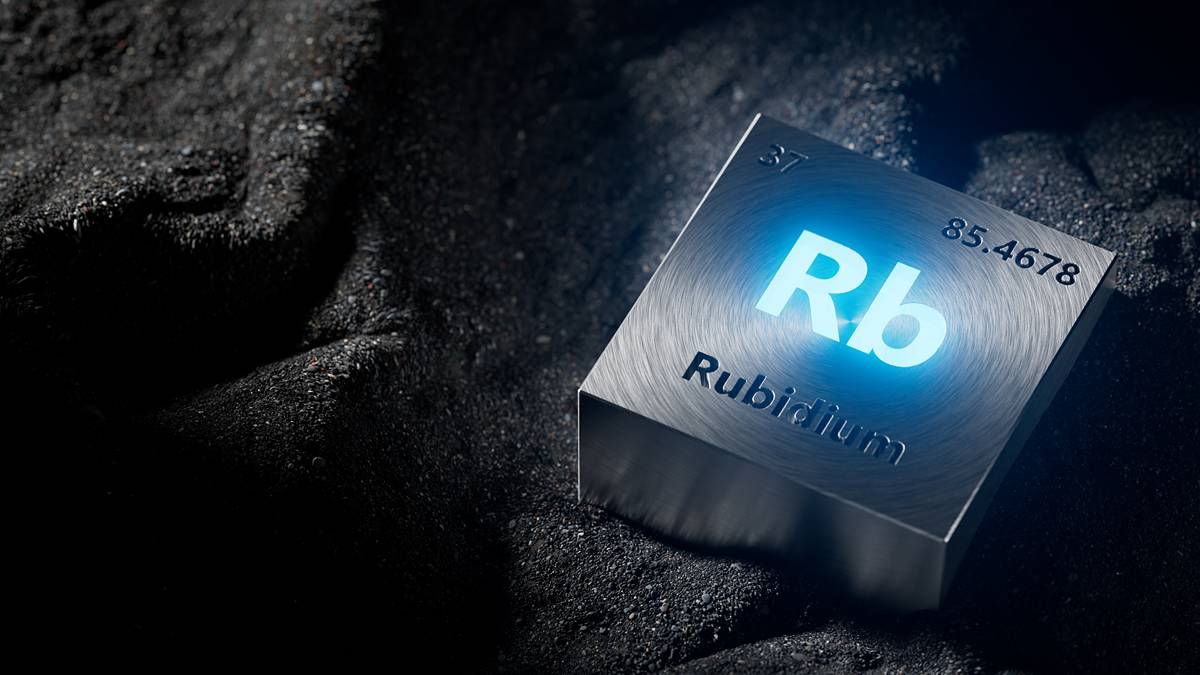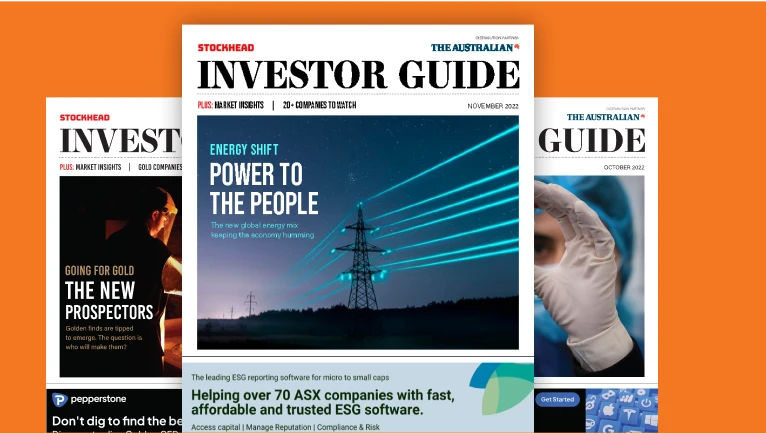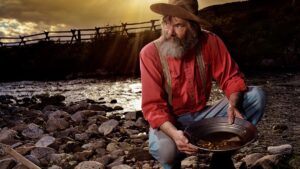Rubidium is turning heads. Who has the rare critical mineral on the ASX?

Rubidium is popping up on the radar for ASX investors. But what does it do? Pic: Getty Images
- Rubidium has started to pop up in a handful of company announcements
- But what is it and what is the outlook?
- We look at the ASX companies playing in the rubidium space
It really is the year for minor metals and the latest one to pop up in ASX company announcements is rubidium.
Rubidium sits next to another minor metal, caesium, on the periodic table.
Used in biomedical research, electronics and defence applications, rubidium is also among the key ingredients in pyrotechnics and specialty glass.
According to the US Geological Survey, there was no published global production of rubidium in 2024, though it was likely produced in China.
The US imports all of its rubidium, though its consumption is estimated at less than 2000 kilograms per year.
However, rubidium is listed as a critical mineral by the US, Japan and New Zealand.
A recent note from London-based firm Hallgarten & Co pointed out that there had been a rise in companies promoting rubidium in their deposits, but little was known about it in the market.
“However, from our own long acquaintance with rubidium we can see a way clear for it to become a metal of some relevance,” analysts Christopher Ecclestone and Sergei Shulin said.
“For us the main upside is as a substitute/alternative to caesium which, because of Washington incompetence/ignorance, allowed the US’s global domination of caesium to pass to Chinese control as recently as 2020.”
While the caesium market is larger than rubidium and growing, there are few Western sources of supply.
Hallgarten said given the chemical and physical properties of rubidium were so similar to caesium that the two elements are often used together or interchangeably in many uses, it begged the question as to whether rubidium could replace caesium in high-pressure gas well workovers.
“We have read nowhere of rubidium’s use in gas wells. Is this because it is unsuitable? Or is it because caesium (until recently) has been more available that [it] was not applied to rubidium being used in workovers?” the analysts said.
“In most shared applications, caesium, which is more readily available and at times somewhat cheaper, has been used in preference to rubidium. But drillers are clearly unhappy with the leasing model that dominates the caesium formate market.”
There are currently three ASX-listed companies with rubidium resources.
Everest Metals Corporation (ASX:EMC)
Everest claims to have the world’s highest-grade rubidium deposit at its Mt Edon project in Western Australia.
The deposit has an inferred resource of 3.6 million tonnes at 0.22% rubidium oxide and 0.07% lithium oxide, at a 0.1% rubidium cut-off, for more than 7900 tonnes of contained rubidium, including a high-grade component of 1.3Mt at 0.33% rubidium oxide and 0.07% lithium oxide, at a 0.25% rubidium cut-off.
Everest has completed an engineering scoping study which confirmed the viability of a 750-1000t per annum operation.
Everest executive chairman and CEO Mark Caruso said the study “showed a robust project that certainly makes commercial sense and warrants development”.
In conjunction with Perth university ECU, Everest has recovered rubidium and has filed a provisional patent application over the process.
“What we’ve got is a very unique opportunity, and probably one of the few opportunities in the world where we can mine rubidium and bring it into production through our own defined processing technology, which we’ve developed with ECU,” Caruso said.
The company will be drilling next month with the aim of converting the resource to measured and indicated and publicly announce the results of the study, followed by the construction of a 10tpa pilot plant next year.
“There’s a fantastic opportunity, not only to produce finished rubidium chloride in its final stages and deliver that into the world market,” Caruso said.
“But in addition, we’re also exploring the US market and perhaps looking at sending rubidium concentrate, which we’ve currently developed into a midstream/downstream process, into the US market.
“So (there are) lots of potential value-adds to the finished rubidium product, or near-term concentrate product,” Caruso said.
Green Technology Metals (ASX:GT1)
GT1’s main game has been the development of the Seymour lithium project in Ontario, Canada.
The company has cut expenditure and suspended the definitive feasibility study for the project, but a strategic review of its portfolio led to the discovery of high-grade rubidium.
Last month, GT1 reported a maiden indicated and inferred resource of 8.3Mt at 0.27% rubidium oxide, containing 23,000t of rubidium, including a high-grade portion of 3.4Mt at 0.4% rubidium oxide for 13,600t of contained rubidium.
The resource sits within the existing 8.3Mt lithium resource at the North Aubry deposit.
GT1 said the resource ranked among the top globally for scale, grade and classification.
The company is now looking at producing rubidium as a by-product of its proposed lithium operation.
“As one of the largest high-grade rubidium resources on the ASX and the most substantial in Canada, Seymour is well positioned to play a critical role in the global supply of this high-value specialty metal,” GT1 managing director Cameron Henry said.
Historical metallurgical test work identified grades of up to 1.3% rubidium in mica-rich waste streams, indicating a low-cost additional revenue stream was possible.
The company will undertake targeted test work to better understand the recovery potential and incorporate it into the broader Seymour development plan.
According to GT1, the global rubidium market is expected to grow from US$4.63 billion in 2023 to US$8 billion by 2033, representing a compound annual growth rate of around 5.6%.
The company said Seymour’s proximity to the US market, as well as Canada’s close ties with Japan, were advantage, and the recognition by those governments of rubidium as a critical mineral potentially allowed it to access additional strategic project funding streams.
Aldoro Resources (ASX:ARN)
Investor focus has turned to the massive carbonatite uncovered by Aldoro at its Kameelburg project in Namibia, where a maiden rare earth and niobium resource was posted in August of 279.9Mt at 2.45% TREO equivalent, consisting of 1.16% total rare earth oxides, 0.18% niobium and 177ppm molybdenum.
Deeper drilling is due in Q4 2025.
But Aldoro’s optionality as a uniquely diversified source of critical minerals exposure is clear in its ownership also of the Niobe deposit in WA.
Originally drilled out in 2022, the project 40km south of the historic WA mining town of Leinster contains a resource of 4.6Mt at 0/17% Rb2O and 0.07% Li2O.
Also 80km northwest of Mount Magnet by road, the project contains a cluster of pegmatite dykes across a 1.4km long prospecting licence, where the key step of transitioning the tenement holding from a prospecting to a mining licence is currently underway.
Rubidium has also been uncovered in sampling at the earlier-stage Wyemandoo project near Windimurra in WA’s Mid West.
At Stockhead, we tell it like it is. While Everest Metals, Green Technology Metals and Aldoro Resources are Stockhead advertisers, they did not sponsor this article.
Related Topics

UNLOCK INSIGHTS
Discover the untold stories of emerging ASX stocks.
Daily news and expert analysis, it's free to subscribe.
By proceeding, you confirm you understand that we handle personal information in accordance with our Privacy Policy.








